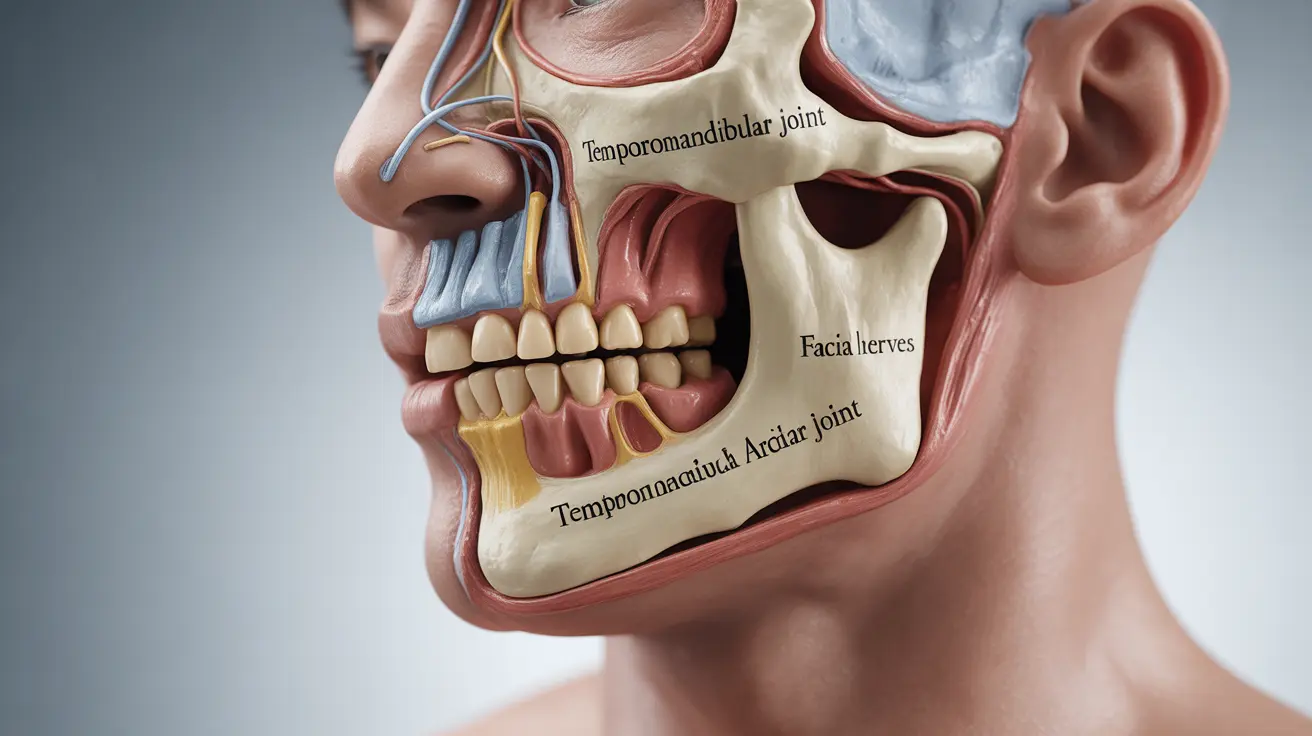Temporomandibular joint (TMJ) disorders can cause a variety of uncomfortable symptoms, including persistent tooth pain that often mimics dental problems. Understanding the connection between TMJ disorders and tooth pain is crucial for getting the right diagnosis and appropriate treatment. This comprehensive guide will help you identify, understand, and manage TMJ-related tooth pain effectively.
The Connection Between TMJ and Tooth Pain
TMJ disorders affect the joint that connects your jawbone to your skull, but the pain and discomfort can extend beyond the joint itself. When TMJ problems occur, they can create tension in the surrounding muscles and nerves, leading to referred pain in your teeth. This connection exists because the same nerve groups that serve your jaw joints also supply sensation to your teeth and surrounding tissues.
Identifying TMJ-Related Tooth Pain
TMJ tooth pain has several distinctive characteristics that set it apart from regular dental problems:
- Pain that affects multiple teeth or shifts between different teeth
- Tooth sensitivity that comes and goes
- Pain that worsens with jaw movement or stress
- Discomfort that tends to be worse in the morning
- Pain accompanied by jaw clicking or popping sounds
Common Causes of TMJ Tooth Pain
Several factors can contribute to TMJ-related tooth pain:
Muscle Tension
Excessive clenching or grinding of teeth (bruxism) can overwork the jaw muscles, leading to TMJ problems and subsequent tooth pain.
Joint Inflammation
Inflammation in the temporomandibular joint can compress nearby nerves, causing referred pain in the teeth and surrounding areas.
Stress and Anxiety
Emotional stress often leads to unconscious jaw clenching, which can trigger or worsen TMJ symptoms, including tooth pain.
Treatment Options for TMJ Tooth Pain
Managing TMJ-related tooth pain typically involves a multi-faceted approach:
Conservative Treatments
- Using ice or heat therapy
- Practicing gentle jaw exercises
- Maintaining proper posture
- Eating soft foods temporarily
- Avoiding extreme jaw movements
Medical Interventions
More significant cases may require:
- Custom-fitted night guards or splints
- Physical therapy
- Anti-inflammatory medications
- Muscle relaxants in some cases
- Stress management techniques
When to Seek Professional Help
It's important to consult a healthcare provider if you experience:
- Persistent tooth pain lasting more than a few days
- Difficulty opening or closing your mouth
- Regular headaches or facial pain
- Clicking or popping sounds in your jaw
- Pain that interferes with daily activities
Frequently Asked Questions
What causes TMJ disorders to lead to tooth pain? TMJ disorders can cause tooth pain through muscle tension, nerve compression, and referred pain patterns. The close proximity of jaw muscles and nerves to your teeth means that TMJ problems can create pain that feels like it's coming from your teeth.
How can I tell if my tooth pain is from TMJ or a dental problem? TMJ-related tooth pain typically affects multiple teeth, changes location, and often coincides with jaw movement. It's usually accompanied by other TMJ symptoms like jaw clicking or facial pain. Dental problems typically cause more localized, consistent pain in specific teeth.
What are common symptoms of TMJ-related tooth pain? Common symptoms include pain that affects multiple teeth, sensitivity that comes and goes, pain that worsens with jaw movement, morning tooth discomfort, and pain accompanied by jaw clicking or grinding sensations.
How is tooth pain from TMJ disorders treated or managed? Treatment options include conservative measures like ice/heat therapy, jaw exercises, and soft food diets, as well as medical interventions such as night guards, physical therapy, and anti-inflammatory medications. Stress management techniques can also be helpful.
When should I see a doctor or dentist for tooth pain related to TMJ? Seek professional help if you experience persistent tooth pain, difficulty opening or closing your mouth, regular headaches, jaw clicking or popping, or pain that interferes with daily activities. A healthcare provider can properly diagnose the cause and recommend appropriate treatment.




